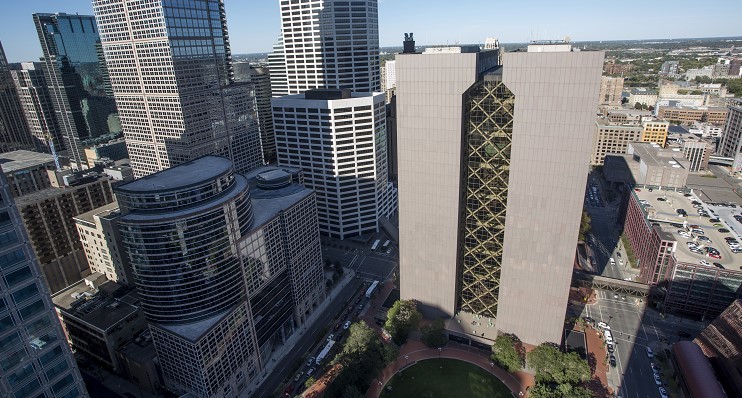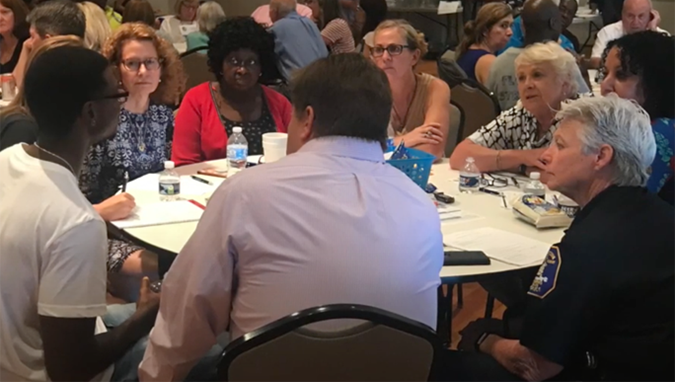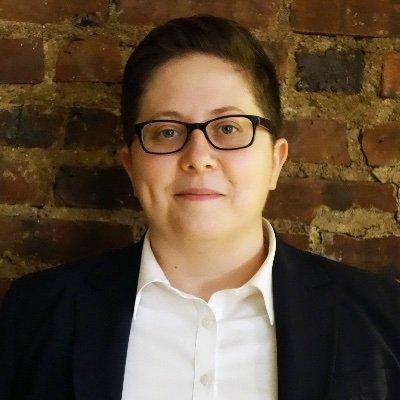Community Engagement Racial and Ethnic Disparities September 12, 2022
The National Association of Counties, in partnership with the National Criminal Justice Association and with support from the Bureau of Justice Assistance, has released a toolkit for counties interested in addressing racial and ethnic disparities in the criminal legal system through grantmaking. The toolkit outlines eight principles, developed by a working group of county stakeholders, state administering agency representatives, and community-led organization leaders, to help enhance equity in the criminal legal system. It features several communities participating in the Safety and Justice Challenge (SJC) that are undertaking initiatives such as grants to community-led organizations.
More information about the toolkit is found here.
County governments play an important role in funding programs and services that support the well-being of community members. With this budget authority, county governments have a unique opportunity to invest in community-led organizations that often provide critical services and supports to communities underserved by social service systems and overrepresented in the justice system. By strategically investing in and partnering with such organizations, counties are also working to close these gaps to correct for historic disinvestment that has led to racial and ethnic disparities in the criminal legal system. To achieve this goal, counties can help ensure equitable access to funding opportunities and minimize barriers to implementation of grant-funded programs and services.
When deploying resources and managing implementation of programs or policies, county leaders pursuing equity in procurement and grantmaking may choose to guide their decision making with the following guiding principles in mind: Trust, Transparency, Community, Fairness, Intentional Access & Inclusion, Support, Creativity, and Joint Accountability.
These guiding principles are supported by several strategies and practices counties can implement to bring them to life and demonstrate a commitment to equity in our communities. Some examples of SJC communities, drawn from the toolkit, include:
Building Trust in Lucas County, Ohio
Trusting partnerships can open lines of communication, encourage a willingness to innovate, and create opportunities for mutual respect. To help build trust with community-led organizations, counties can invest in the capacity and expertise of community leadership, anchor the relationship in a common goal, reject the funder/recipient power dynamic that can stifle relationships, and learn from and listen to one another as partners.
In Lucas County, Ohio, commissioners dedicated $200,000 to community-led organizations engaging in criminal justice reform efforts and addressing racial disparities. The grant fund provides awards of up to $10,000 to grassroot organizations working in four zip codes. The county’s Criminal Justice Coordinating Council (CJCC) also administers federal criminal and juvenile justice funds on behalf of the state, to allow for greater flexibility while continuing to provide oversight and technical assistance.
Advancing Joint Accountability in Cook County, Illinois
As stewards of public dollars, government funders and community-led organizations play a critical role in responding to and serving community members’ needs. Prioritizing intentional investments in communities traditionally left out of the funding process, communicating funder expectations, committing to sharing data, and building a working relationship with continued communication and support can help counties work towards joint accountability.
Cook County, Illinois launched a 50-member taskforce to advise on the county’s strategic investments. One of the grant programs invests in community-led organizations that serve areas with disproportionately high rates of gun violence. Tiered funding tracks with staggered deadlines provide organizations that may have smaller budgets and/or grant writing capacity with time to submit strong applications and be evaluated among similarly situated organizations. The grant funding is provided on a quarterly basis, rather than a reimbursement, and grantees may request a funding advance. Organizations that are led by, support, or employ community members with criminal convictions are not barred from applying on that basis.
Enhancing Fairness in Multnomah County, Oregon
Implementing new processes to enhance fairness in the types of organizations funded and how these funds are administered will help improve access and equity. Strategies to advance fairness include training staff to recognize and address personal and organizational biases, promote practices that allow grantees to contribute to the grantmaking process, raise up champions, and not lower the bar but raise the platform.
Leaders in Multnomah County, Oregon evaluated county investments to fund programs that address the underlying drivers of harmful behavior and uplift communities of color. The county expanded the Community Healing Initiative that invests resources in community-based partnerships to support youth and families. The program deploys culturally specific services and provides direct relief such as rent, utilities, and internet access. To support smaller and emerging organizations, the county is piloting an initiative to provide 13 months of funding for year-long projects to jumpstart their programming with resources.
Promoting Intentional Access and Inclusion in Philadelphia, Pennsylvania
Aligning resources with equity goals and removing barriers to participation and use of funding will expand and diversify grantee opportunities and potential relationships. By considering the structure and level of funding, allowing for various entry points, evaluating needed changes in the application process and components, and measuring and broadening success, counties can support access and inclusion for all potential grantees.
The Criminal Justice Microgrant Fund in Philadelphia, Pennsylvania provides resources to community-led organizations engaged in innovative criminal justice reform efforts. Funding can be used to support communities disproportionately impacted by the criminal legal system or provide services to residents who are involved in the system. Organizations led by people of color may also seek general operating support.
Honoring and Uplifting Creativity in Los Angeles County, California
While working within the confines of funding rules and requirements may pose challenges, it can be beneficial to evaluate and revise processes. Honoring and uplifting creativity and innovation, through learning, sharing, and evolving beyond the status quo and utilizing the tools, discretion, and flexibility available to counties, can help to challenge and expand standard practices to work for both sides of the grantmaking equation more effectively.
Residents of Los Angeles County, California approved Measure J in 2020 to dedicate no less than 10 percent of the county’s locally generated, unrestricted funding to community investments that address the disproportionate impact of racial injustice. The county established a 24-member committee that can garner community input and project recommendations through an online form, in both English and Spanish. A community-based, third-party administrator and a community engagement consultant ensure diverse community voices are elevated and incorporated into the decision-making process.
Offering Support in Milwaukee County, Wisconsin
Providing an infrastructure of support and resources for community-led organizations, particularly those new to applying for and/or receiving government funding, can help successfully manage funds. To expand support, counties can provide culturally and socially responsive training, technical assistance, and coaching, invest in funder internal capacity, and engage in intermediaries.
Milwaukee County, Wisconsin’s Community Justice Council is providing grants of $34,500 to each of four grassroots organizations working to reduce or prevent criminal legal system involvement, promote racial equity and engage the community. To support applications, the Community Justice Council sponsored a community grant writing training, hosted an optional information session prior to the submission deadline and published the scoring rubric. During the grant period, grantees are required to attend a new grantee orientation and meetings to discuss expectations, support grant administration and offer connections among the group. A local university serves as the fiscal agent to help grantees meet reporting requirements and disperse funds more quickly.
Improving Transparency in Dane County, Wisconsin
Publishing and sharing materials and decisions often contributes to increased buy-in, accountability and mutual understanding. By prioritizing an open and ongoing commitment to share information in a timely and helpful manner, announcing the process surrounding decision making and personnel/advisors involved, and communicating the purpose of data-collection efforts and results, counties can improve transparency.
Via working group recommendations in Dane County, Wisconsin, county leaders developed the Partners in Equity Grant Program to fund grassroots organizations that aim to reduce legal system involvement and address systemic racial inequities. Organizations can apply for up to $15,000 in funding. Additionally, the county requested an external evaluation of grantmaking policies and practices to enhance racial and social equity across departments.
The Opportunity for Counties
This equity toolkit, and the principles and strategies outlined within, can assist counties to reflect on grantmaking processes to administer funds more equitably and for greater impact. Capitalizing on national momentum to address and reduce racial and ethnic disparities in the criminal legal system, counties can find critical partners and trustees in community-led organizations.











